What is Planetary Hours, part 2.
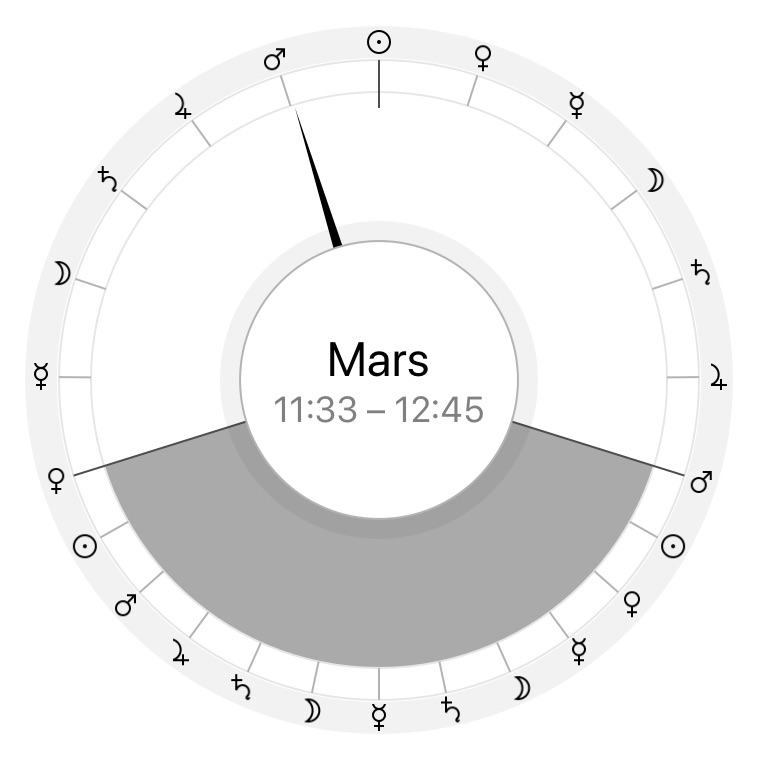
From the notion of planetary hours to the days of the week, the seven planetary spheres can be found in each major division of time.
Continuing mini-series on the topic of planetary hours. This is the second part of the story. The first part can be found here.
Recapping the previous article
In the previous part it was proposed that the notion of planetary spheres can be deduced by arranging the celestial bodies according to the average speed of their movement as observed from the Earth:
1. Saturn ➝ 2. Jupiter ➝ 3. Mars ➝ 4. Sun ➝ 5. Venus ➝ 6. Mercury ➝ 7. Moon
The order of the planetary spheres reflects the notion of time passing through the duality of day and night. Each phase of the day consists of 12 hours of either light or darkness. The interplay between the number seven and the numbers 12 and 24 provides a fertile ground for numerological interpretation.
The number of creation – seven
The metaphor of the seven days of the creation gives us the foundation cycle from birth to completion:
- The world as we know it has been created in seven “days” or rather seven phases
- Individual human life is also said of following the seven phases, staring with the Moon phase and wrapping up during the phase of Saturn
Each creative phase or “day” can be divided into sub-phases of 24 hours during which the interplay of polarities between light and darkness produces variety of principles, shapes and forms.
Inventing the days of the week
Creative impulse begins with the Sun force, the most central and most energy rich of all planetary forces.
The day of Sun is therefore can be nominated to be the first day of the week, naturally called Sunday.
Sunday begins with the hour of the Sun at the moment of… yes, sunrise!
The rest of Sunday follows the natural pattern of planetary hours:
Sun ➝ Venus ➝ Mercury ➝ Moon ➝
Saturn ➝ Jupiter ➝ Mars ➝ Sun ➝ Venus ➝ Mercury ➝ Moon Saturn ➝
… until 12 hours is complete and the phase of darkness is about to begin at the moment of sunset. For Sunday the sunset marks the hour of Jupiter.
The 12 hours of night time receive the following sequence of planetary hours :
Jupiter ➝ Mars ➝ Sun ➝ Venus ➝ Mercury ➝ Moon
Saturn ➝ Jupiter ➝ Mars ➝ Sun ➝ Venus ➝ Mercury ➝
As soon as the hour of Mercury has finished, the next day’s sunrise takes place. Surprisingly, the next day sunrise matches the hour of the Moon and therefore it can be called Monday.
➝ Moon ➝
Saturn ➝ Jupiter ➝ Mars ➝ Sun ➝ Venus ➝ Mercury ➝ Moon
➝ …
And so it continues until the whole week as we know it has been completed:
| # | Sunrise | Day of the week |
|---|---|---|
| 1 | Sun | Sunday |
| 2 | Moon | Monday |
| 3 | Mars | Tuesday |
| 4 | Mercury | Wednesday |
| 5 | Jupiter | Thursday |
| 6 | Venus | Friday |
| 7 | Saturn | Saturday |
At the end of the seventh day’s night, Saturday, the planetary hour moves from the hour of Mars to the hour of Sun thus marking the beginning of Sunday and starting the new weekly cycle.
The table below shows the full sequence of the hours that constitute a full seven day week totalling at 168 hours.
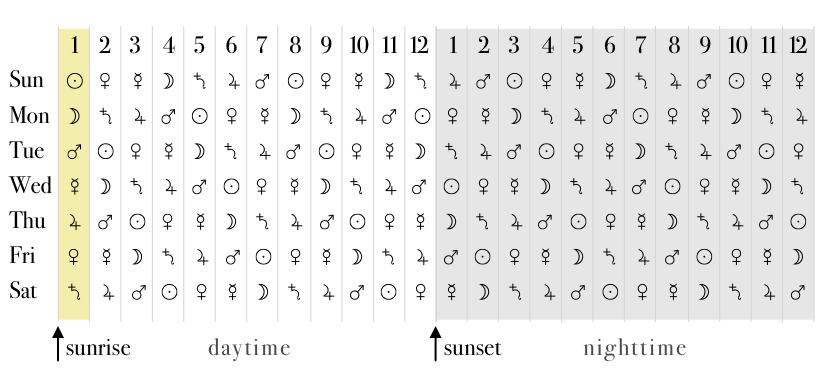
It is worth noting that in this system each day starts at the moment of sunrise, not at midnight as in civil calendar.
Origins of the days of the week in the English language
In Latin the days of the week follow exact naming convention where each day is named after the planetary hour of its sunrise: diēs Sōlis, diēs Lūnae, diēs Mārtis, diēs Mercuriī, diēs Iovis, diēs Veneris, diēs Saturnī.
Planetary hours can also be attributed to the deities of the Greco-Roman world, for example Helios or Sol, Selena or Luna, Ares of Mars, Hermes or Mercurius, Zeus or Iuppiter (Jupiter), Aphrodite or Venus, Kronos or Saturnus.
The English language has been influenced by the Germanic culture and language, during this process some Greco-Roman deities have been substituted by Germanic correspondences.
| # | Sunrise | Day of the week | Germanic pantheon |
|---|---|---|---|
| 1 | Sun | Sunday | Sunna or Sól, personification of the Sun |
| 2 | Moon | Monday | Máni, personification of the Moon |
| 3 | Mars | Tuesday | Tíw or Týr, god of combat |
| 4 | Mercury | Wednesday | Woden or Odin, god of wisdom, healing, death |
| 5 | Jupiter | Thursday | Thor, god of thunder |
| 6 | Venus | Friday | Fríge or Freyja, goddess of beauty |
| 7 | Saturn | Saturday | No correspondence |
It is easy to see the correspondences between Germanic and Greco-Roman gods.
From planetary spheres to days of the week
The seven day week, as we know it, has been a truly fascinating discovery. It originates directly from the foundational division of time and carries deep numerological significance of the interplay between the numbers 3 and 4.
The graph below illustrates the weekly cycle as expressed through the order of the planetary spheres.
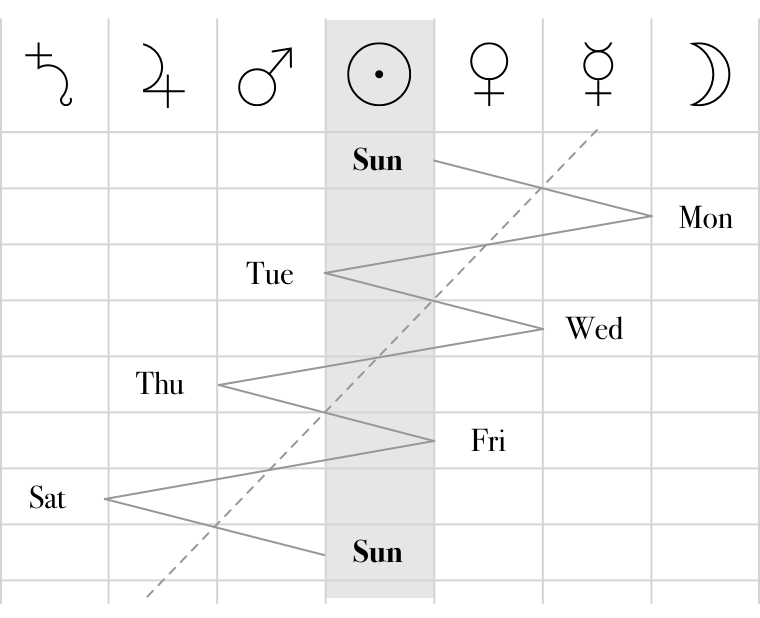
Another interesting observation – the graph above has an axis of symmetry that is pointing at Mercury. This makes a lot of sense since Mercury rules interfaces between opposing principles like day and night, life and death. For a deeper look into the nature of Mercury and its mastery of rhythms and polarities read our story “Myths and truths behind Mercury retrogrades”.
Astronomical significance
Duration of planetary hours changes throughout the year. Twice each year, at the moments of precise equinoxes, both day and night are of equal duration and each planetary hour is measured exactly 60 minutes.
After the brief moment of equilibrium, the hours begin to change their duration as the day grows and the night recedes (or vice versa).
During each solstice the difference between hours of day and night reaches its absolute maximum. The screenshots below show how Time Nomad app changes the watch face depending on the calendar date.
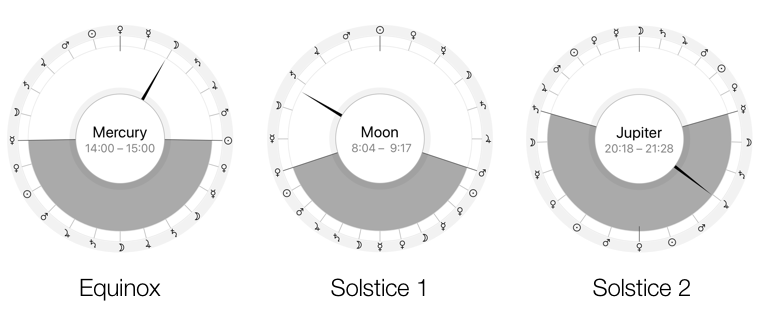
The annual cycle of ebb and flow of day and night hours is another dynamic parameter in the interpretation of planetary hours. Imagine somebody who was born during some “condensed” day hour of winter versus the same person born during some other “expanded” day hour during summer.
In the next part…
The next part will look further into the relationship between days of the week, sacred geometry and numerology. Keep reading…
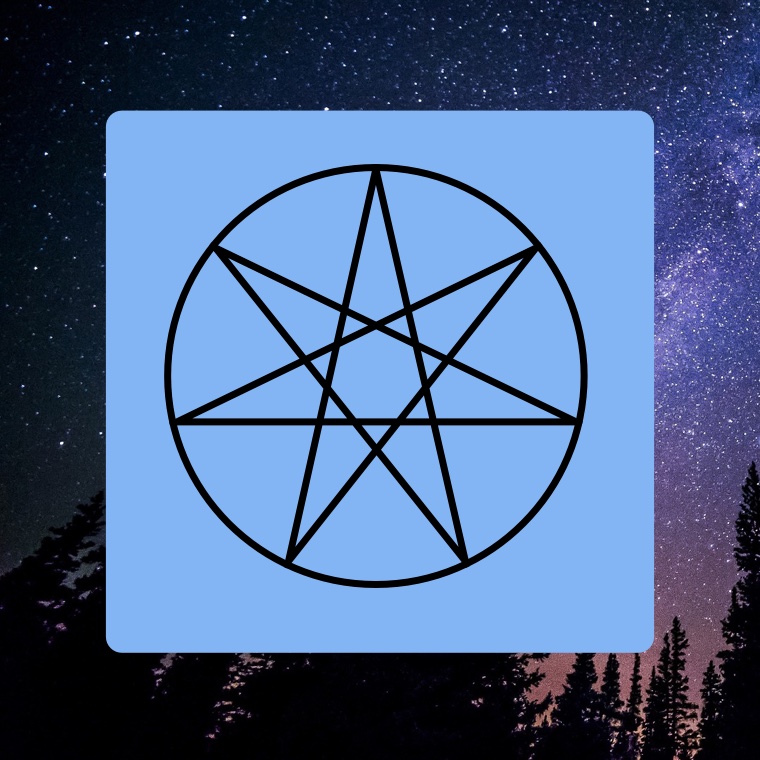
How to calculate planetary hours using Time Nomad
Learn how to use planetary hours calculator, schedule a planetary hours alarm and discover other tools to work with planetary days of the week.